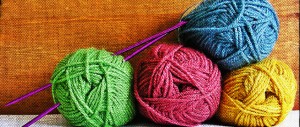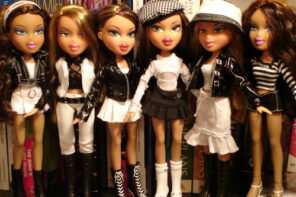In my opinion, knitting is the perfect winter activity. It gives you an excuse to cozy up with a blanket and rest, while still making the most of your time. You can create nearly anything once you know the basics. Hats, scarves, and mittens are popular projects because they don’t take long to finish and the results are rewarding – not to mention the satisfying moment when you get to tell people you made the stylish item you’re wearing.
According to Ruby Carter, a seasoned knitter from the West Island, once you commit to a project it is essential to finish it. She notes that, “It may take a while, but every stitch gets you closer to the end, and you can’t give up on it.”
With over 50 years of knitting experience, Ruby is an authority on the craft, and she has offered to share some of her tips with The Bull & Bear. According to Ruby, “once you get used to knitting, it is a great form of relaxation. You can accomplish a lot by just sitting down and knitting!”
Step 1: Buy materials
Before you start to knit you need yarn and needles! These can be purchased at any craft store. DeSerres in the Place Montreal Trust is a good place to start. Needles can be made of plastic, bamboo, or metal. While you’re just learning to knit, the size of the needle is not important – just pick a pair in a size and material that feels good to hold. You may be overwhelmed by the sheer number of choices of needles. A good rule of thumb is that the thicker the needle, the thicker the yarn needs to be. There are balls of wool for as cheap as $3 each. Only two or three balls of wool are required to make one scarf, making knitting a much cheaper and cozier alternative to store bought items.
Step 2: Learn the Stitches
There are two types of stitches: knitting and purling. Once you have relatively mastered them you will be ready to start a project. Prior to the internet age you would’ve had to find a friend or an amicable old lady to teach you, but thankfully we now have Youtube. There are hundreds of instructional videos to help you learn. If you get stuck and need some help, feel free to visit any of Montreal’s knitting boutiques, such as Espace Tricot or La Maison Tricotée.
To begin, you must “cast on,” or put the first row of stitches on one of your needles. From there, follow Youtube and try making some of your first stitches! Once you’ve had your fill of knitting and purling, you have to “bind off” – that is, remove your stitches from the needle. Once again, the Internet is your best friend here.
Learning to knit can be challenging, but don’t get discouraged. You might not be ready for a project after your first try, but, once you have a grasp on the stitches, you are unlikely to forget them.
Step 3: Pick your First Project
Congratulations! You’ve learned the basic stitches. Now its time to start your first project. Hats, scarves, and mittens are all great beginner ideas. Sweaters take many balls of yarn and a substantial time commitment, so wait a bit before you choose to tackle a bigger project.
Free knitting patterns are available over the Internet. Check out Ravelry, KnitPicks, or KnittingHelp.com, for some free beginner patterns. Making your first project can often be discouraging. The language of the patterns may be unfamiliar and you’re bound to make a few mistakes. Ruby says that it is important to “take out the mistake right away before it makes a big difference in your project.” Don’t lose courage, and keep at it!
The pattern will stipulate the thickness of yarn and needles you need to use. Needles are measured in millimeters while yarn is rated on a scale of one to six, one being the thinnest and six being the thickest. Although it might seem like these are unimportant details, the needle and yarn size determine the final size of the project. If you want the project to fit, it is important to follow these instructions.
Patterns are written in abbreviations and may be hard to read at first. There are a few basic phrases you should be familiar with:
K means Knit
P means Pearl
CO means Cast On
BO means Bind Off
Dive in! You’re on your way to completing your first hand-knit item!








